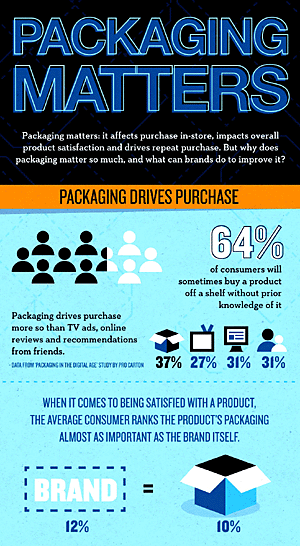 MeadWestvaco Corp., Richmond, Va., USA, has launched its inaugural consumer satisfaction study, "Packaging Matters." The study explores the role of packaging in product satisfaction as consumers purchase, transport, use, and dispose of products across 10 different categories. The results suggest that packaging satisfaction can have a significant impact on purchase intent and repeat purchase, and that there is a low level of satisfaction overall, especially once consumers leave the store and rely on the structural or functional features of the package at home or on-the-go.
MeadWestvaco Corp., Richmond, Va., USA, has launched its inaugural consumer satisfaction study, "Packaging Matters." The study explores the role of packaging in product satisfaction as consumers purchase, transport, use, and dispose of products across 10 different categories. The results suggest that packaging satisfaction can have a significant impact on purchase intent and repeat purchase, and that there is a low level of satisfaction overall, especially once consumers leave the store and rely on the structural or functional features of the package at home or on-the-go.
The study clearly shows that when it comes to purchase intent and product satisfaction, packaging does matter. A majority of consumers will sometimes buy a product off the shelf without prior knowledge of it (64%) and rarely use mobile devices to research a product while shopping (72%). While quality (85%) and price (67%) are the most important factors contributing to overall product satisfaction, consumers report little variance in importance between a product's brand (12%) and packaging (10%).
Despite the importance of packaging, there is a clear opportunity for improvement. Fewer than 20% of U.S. consumers report they are "very satisfied" with product packaging, with the least amount of satisfaction from carry-out food containers and beauty care product packaging.
"The research further proves that packaging is one of the most powerful tools in the marketing communications mix, but as it stands now, packaging does not delight consumers," said Brian Richard, director, Consumer and Customer Insights, MWV. "Brands should view the current gap in satisfaction as an opportunity to make improvements to their packaging by focusing on what matters most to consumers."
The study identified "satisfaction gaps"—the importance of different packaging attributes compared with their perceived performance. Of the 15 packaging attributes studied, only a small percentage of consumers ranked shelf appeal, or the product's "attractiveness" and "distinctiveness," as "very important" features to their satisfaction (6% and 10%, respectively). However, this is where brands were performing best, with performance exceeding importance. While brands are generally pleasing consumers during the shopping experience, satisfaction drops dramatically when product packaging is relied upon for transport and storage and then when the product is used and reused.
The largest satisfaction gaps across categories all relate to the structural features or functionality of the packaging. In terms of importance, consumers want packaging that protects from breaking or spilling (74%), maintains product integrity (72%), and gets the entire product out of the package (66%).
"Packaging satisfaction decreases significantly after consumers leave the store, at all touch points along the product lifecycle, such as transporting, storing, and using the product. This is a huge missed opportunity for brands," said Steve Kazanjian, VP, Global Creative, MWV. "Structural features of the packaging should be viewed as the most critical area for brands to make improvements to drive consumer satisfaction.
"Packaging that lives up to the brand promise of its marketing communications holds the most potential for repeat purchase. As more retail migrates online, consumers are interacting less with brick-and-mortar channels. A disappointed consumer can switch brands with one click, so the role of packaging is increasingly an important vehicle for brand owners to connect with their consumers at touch points throughout the product's lifecycle," Kazanjian added.
Results of "Packaging Matters" reveal a significant variance across a variety of demographics and categories. For example:
"Packaging Matters: Packaging Satisfaction Study" was commissioned by MWV and studied the shopping habits and consumers satisfaction with packaging from store shelf to transport, storage, use, and disposal of 3,000 U.S. consumers. Full study results http://mwv.com/packagingmatters are available online.
TAPPI
http://www.tappi.org/